Dan Lepard's cheat's sourdough loaf with seeds and olives
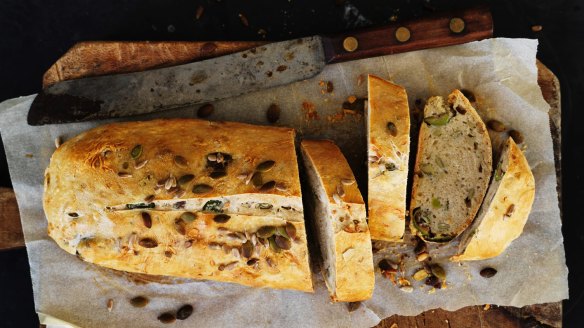
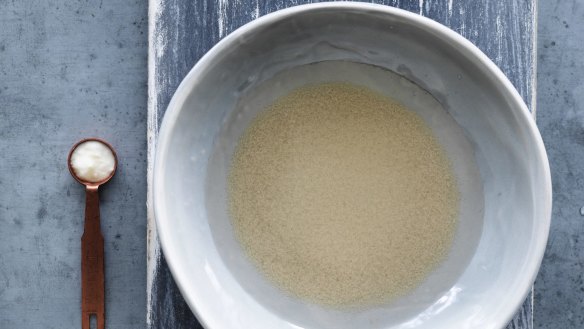
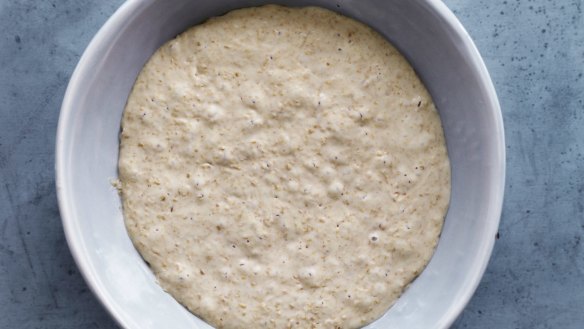
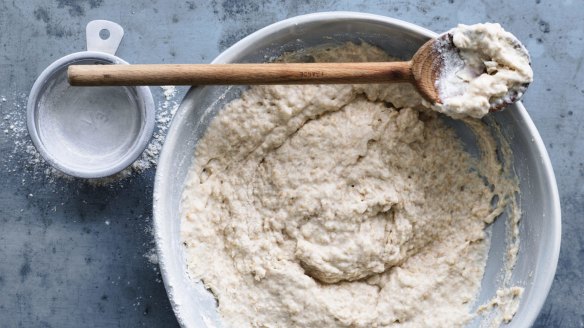
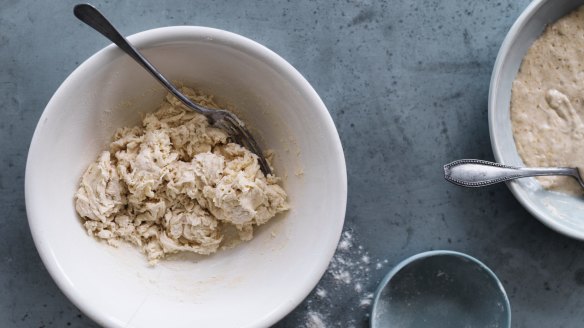
Dan Lepard's step-by-step guide to faux sourdough, a faster version of authentic sourdough.
Cheat's sourdough
Authentic sourdough is the ideal, where microflora found on a wheat grain's outer husk is encouraged to bubble and multiply by adding water to flour. It can take days or more to start visibly fermenting, and even longer for the balance of yeasts and bacteria to form a leaven full of complex acidity, aromas, flavours and dough-rising power.
The standard method is pretty much the same as the kind I am doing here: a faux (pronounced foe, like the enemy) sourdough where packet yeast and lactic bacteria from kefir or yoghurt cause the mixture to aerate and turn simply sour within a few days. So, think of this faux sourdough as an easy training starter that quickly lets you move on to tackle those different skills needed to make a sourdough loaf. Make this faux one first then try using the same method, without the added yeast and yoghurt, to make an authentic sourdough starter.
Ingredients
For the starter
200ml warm water
½ tsp fast-action yeast
1 tsp live kefir or plain yoghurt
100g wholemeal flour, ideally organic
100g white flour, can be bread or plain
Extra flour as needed
Method
Step 1. Pour the water into a bowl and stir in the yeast and yoghurt until dissolved. Stir in the flours: the wholemeal flour is there to provide the source of natural microflora while the white provides extra starches and natural sugars that are quickly fermentable.
Step 2. Cover the bowl and leave for 24 hours at room temperature (between 20C and 30C). It will start to bubble and smell yeasty and slightly sour.
Step 3. Now we give it one "refreshment". Spoon out 20g old starter into a clean bowl and discard the rest (or add it to a bread dough). Then mix in 100ml warm water, break it up with a fork until smooth, then mix in 150g white bread flour. Knead this to a firm dough, put it back in the bowl, cover and leave for 24 hours to double in volume. Store in the fridge and use as required for up to a month. The day before using, give it one more refreshment to make sure it doubles in volume, then it's ready to use in a recipe. To maintain your starter, refresh it monthly.
Step 4. If you're making an authentic starter without the yeast and yoghurt, you will need to build up the "strength" and number of yeast and bacteria by refreshing it a number of times while it's still a liquid. To do this, at the point where some bubbling occurs, stir it well and discard four-fifths into the compost bin, and add flour and water to replace what you've taken out. Keep doing this every day until you have a mixture that doubles in volume and bubbles within 6 hours of mixing in fresh flour and water. Then follow the step 3 instructions to get it ready to store in the fridge.
Sourdough loaf with seeds and olives
This bread is a two-day adventure, lengthy and more fuss than throwing everything in the bowl at once, but potentially giving you a crisp blistered crust, a more open crumb texture and a great flavour. I've kept the water low so the dough is firm and easy to shape, but with practice do increase the water to make the dough more supple and stretchy. To make this bread without sourdough, replace the starter with half a teaspoon of fast-action yeast.
Ingredients
For the ferment
20g sourdough starter
40g white bread flour
40g warm water
For the dough
350g white bread flour
50g wholemeal flour
250g cold water
2 tsp salt
For the seed and olive mixture
30g sunflower seeds
30g pumpkin seeds
30ml boiling water
100g pitted and halved olives
egg wash and extra seeds for the top
Method
Step 1. Mix the ferment ingredients together in a small bowl. Cover and leave for 4 hours, by which time it should have doubled in volume and be full of bubbles. If it hasn't, you must wait until it does.
Step 2. As soon as your starter has clearly risen, mix the flour and water for the dough together in a step called the autolyse, which lets the gluten form in advance of adding the sourdough and salt to improve the texture. Mix the two flours and water together roughly but evenly then cover and leave 2 hours.
Step 3. Evenly mix the ferment into the dough, without the salt, and leave covered for 20 minutes. Then sprinkle on the salt and gently mix this through the dough. It doesn't matter if it's unevenly mixed as the dough is mixed again later. Cover and leave the bowl at room temperature for an hour.
Step 4. Meanwhile put the seeds in a bowl, pour on the boiling water and leave for 30 minutes. Then drain the seeds and the olives and pat dry on paper towel. When the dough has sat for an hour, dampen the work bench with a little water and pat the dough out into a rectangle about 1cm thick. Spread the seeds and olives over it, then roll it up like a swiss roll. Tap it with your fist to seal it together then roll it up again so you have a neat scrolled piece of dough. Place it back in the bowl, cover and leave the dough to rise.
Step 5. Sourdough rises slowly so it will take about 4 hours at room temperature for the dough to become puffy and full of air bubbles. As you get experienced you might want to give the dough a "stretch and fold" to help exaggerate the size of the air bubbles in the dough.
Step 6. Once you can see clear signs of aeration in the dough, tip the dough onto a lightly floured work bench and roll up tightly into a sausage, seal the ends then place seam side down on a tray and leave to rise again until puffy.
Step 7. Heat the oven to 220C fan. Brush the top of the loaf with beaten egg, sprinkle with seeds, slash down the length of the loaf with a blade and bake with a steam tray in the base of the oven for 30-40 minutes until golden.
Makes 1 loaf
The best recipes from Australia's leading chefs straight to your inbox.
Sign upFrom our partners
Original URL: https://www.smh.com.au/goodfood/recipes/dan-lepards-cheats-sourdough-loaf-with-seeds-and-olives-20180911-h1590t.html